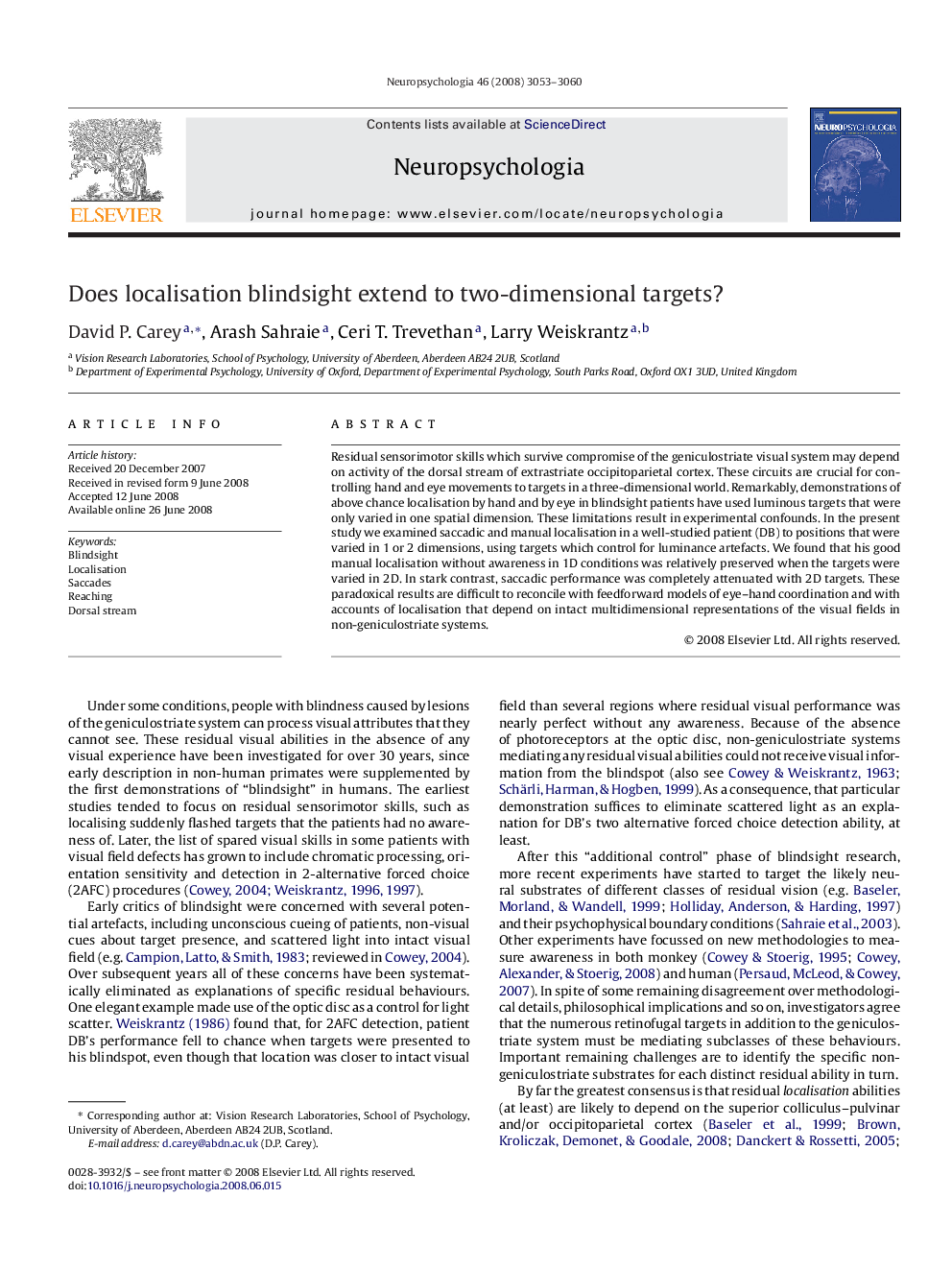| Article ID | Journal | Published Year | Pages | File Type |
|---|---|---|---|---|
| 10466540 | Neuropsychologia | 2008 | 8 Pages |
Abstract
Residual sensorimotor skills which survive compromise of the geniculostriate visual system may depend on activity of the dorsal stream of extrastriate occipitoparietal cortex. These circuits are crucial for controlling hand and eye movements to targets in a three-dimensional world. Remarkably, demonstrations of above chance localisation by hand and by eye in blindsight patients have used luminous targets that were only varied in one spatial dimension. These limitations result in experimental confounds. In the present study we examined saccadic and manual localisation in a well-studied patient (DB) to positions that were varied in 1 or 2 dimensions, using targets which control for luminance artefacts. We found that his good manual localisation without awareness in 1D conditions was relatively preserved when the targets were varied in 2D. In stark contrast, saccadic performance was completely attenuated with 2D targets. These paradoxical results are difficult to reconcile with feedforward models of eye-hand coordination and with accounts of localisation that depend on intact multidimensional representations of the visual fields in non-geniculostriate systems.
Related Topics
Life Sciences
Neuroscience
Behavioral Neuroscience
Authors
David P. Carey, Arash Sahraie, Ceri T. Trevethan, Larry Weiskrantz,
